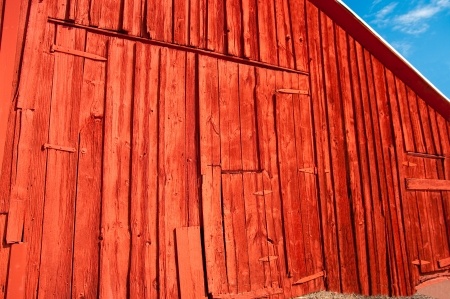As humans, we are storytellers. How my Scottish great grandfather came to America only to pine for his homeland love until he earned enough money to send for her is a family story of devotion, adventure and hard work. How George Washington confessed to cutting down the cherry tree is a public story of honesty and character in light of human imperfection.
Some stories have such a pull on our imagination that variations are told over and over again. These familiar storylines help us to understand life and we (consciously or not) often interpret new events through the lens of our dominant storylines. The Horatio Alger story of “pulling one up by one’s boot straps” is an example of a dominant storyline: when we see someone rise from poverty to power through hard work, grit and gumption, we celebrate that the little guy sometimes comes out on top.
There are, economist Robert Reich observed, four dominant storylines in America: the Triumphant Individual (think Horatio Alger, Bill Gates); the Rot at the Top (the corruptive influence of power – think Bernie Madoff, Boss Tweed); the Mob at the Gate (this holds that America is a special place and thus continually under threat of outsiders who want what we have – think the Cold War, anti-immigration); and the Benevolent Community.
The Benevolent Community is the story of neighbors and friends rolling up their sleeves to pitch in for the common good. It is exemplified by volunteer firefighters, charity balls, donations sent to hurricane-leveled communities, and Montana ranchers joining ranks to raise a barn.
The story of Graduation Matters Montana is a story of the Benevolent Community. First started three years ago, Graduation Matters Montana (GMM) is a statewide, community-based strategy to increase the number of Montana students who graduate from high school, prepared and excited for their next steps in life.
The tagline of GMM is “Locally designed, locally implemented, based on what works in Montana.” Over 40 Montana communities have launched a GMM initiative, representing 75 percent of Montana high school students. In each community, local school staff, students, Main Street business owners and community organizations join together to better understand, through careful analysis of data and content-rich discussions, the experience of students who are not thriving in school. GMM teams develop strategies to address students needs, using local capacity within the school and community to meet those needs.
In each community, the strategies are different, but the storyline – one of friends and neighbors coming together over shared values of healthy families and a healthy community – remains the same.
When students in Hardin, a mid-sized town off the Crow Reservation in southeastern Montana, heard that 32 high schoolers had dropped out that fall, they thought, “These are our friends, our cousins: we know them. Why did they drop out? What will bring them back to school?” So they designed a survey with the help of school staff and talked to recent classmates. The information they brought back to the Graduation Matters Hardin team galvanized efforts to create a more supportive environment at school, and to engage local community organizations to address student lifestyle challenges.
When local business leaders in Anaconda, another mid-sized town in what was once the heart of the copper industry, joined their local Graduation Matters Anaconda team, they were struck by the “invisible middle”: high school students who weren’t the captains of the debate team or Homecoming Queen, nor were they counting the days until they could legally drop out of school. These business leaders, led by the local Rotary Club, designed a GMM Leadership Academy, in which students participate in monthly seminars on issues such as leadership, community involvement and tolerance.
When school staff at Rocky Boy High, on the Rocky Boy Reservation on the northern Hi-Line of central Montana, started focusing on better preparing their graduates for college, they found willing partners in the local tribal college, Stone Child College, who helped them revamp their language arts coursework; in local businesses, who pitched in to give every graduating senior a college scholarship; and in the staff of the Montana GEAR UP program, which encouraged them to be Graduation Matters Rocky Boy, in addition to other programmatic supports.
Each of these stories is a story of what is possible when community comes together in genuine inquiry: to better understand the experiences of students, and to create relevant opportunities for success. Through Graduation Matters Montana, local communities connect to a larger, statewide discussion – a community of practice – in which we learn from one another and inspire one another to take the next bold steps in our work.
Americans’ capacity to work through challenges together and to strive for better opportunities for all is very much a story of the Benevolent Community. Graduation Matters Montana has been as successful as it is, I believe, because we tap this essential truth, support its development, and let it shine.

